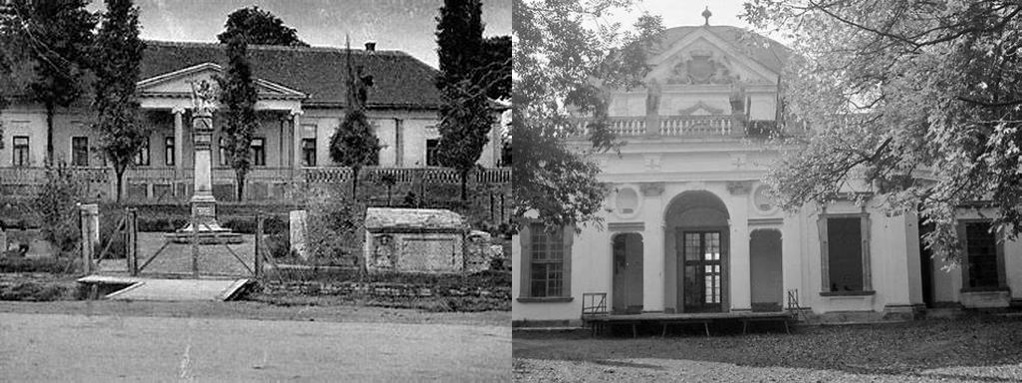
Vásárhelyi-kúria in the quiet village of Szomor offers an unexpectedly immersive slice of Hungarian history for anyone curious enough to meander off the beaten track. Tucked behind centuries-old trees, the mansion whispers tales of bygone elegance and resilience, standing as a proud relic amid the undulating landscapes of the Gerecse foothills. Walking up to the gate, it’s not hard to picture carriages crunching along the pebbled drive or the sound of laughter drifting from candle-lit parlours. For those who love peeling back the layers of a place, the Vásárhelyi Mansion is more than just a well-preserved building—it’s an invitation to step into another era, one where personal histories are woven into the very bricks and beams.
The story really begins in the late 18th century, when the Vásárhelyi family—landowners with a keen sense of both enterprise and aesthetics—commissioned the mansion. Their vision for this rural estate was striking and the result speaks for itself even centuries later. The architecture is classic and measured, displaying the symmetry and restrained decoration so typical of the late Baroque period. It’s easy to linger here: light pours in through the spacious windows, illuminating details like hand-carved balustrades and delicate ceiling mouldings. But the place isn’t just about good looks. When you carefully run your fingers along the cool banisters or gaze at the oversized stone fireplace, you’re connecting with a lineage that was shaped by Hungary’s turbulent 19th century—when noble families like the Vásárhelyis had to deftly navigate political upheavals and shifting allegiances, yet still managed to craft a home filled with style and substance.
What sets Vásárhelyi-kúria apart is its simultaneously stately and lived-in atmosphere. There’s nothing overly restored or artificially manicured here. Signs of daily life are still everywhere: the remnants of well-tended gardens out back, a collection of tools in the carriage house, stables that once echoed with the sounds of magnificent horses. Visitors are often surprised to find that the mansion, with its thick old walls and generous spaces, remains a hub for local activity. In recent times, various rooms have hosted intimate concerts, art exhibitions, and community gatherings. The house and its grounds are often filled with a kind of slow, steady energy—one that comes not just from its age, but from its continual role as a gathering place through the generations. Even now, the locals are eager to share recollections of the grand parties held here, or tales of storms weathered together within these sturdy walls.
One of the most touching aspects of the mansion is the way it has adapted over the ages. During the first half of the 20th century, amidst wars and economic hardship, parts of the Vásárhelyi estate were repurposed. The living spaces were divided, farm buildings adjusted, even the elegant main hall turned into a makeshift hospital during World War II. Stories abound of how the owners and local villagers worked together, pooling resources and offering help to those in need. Indeed, more than one room is said to have sheltered wounded soldiers or provided a warm meal to passing refugees. All these experiences have added layers of memory and meaning to the place—a mansion blessed and battered by the times, but never broken.
Today, as you wander through the rooms of the Vásárhelyi Mansion, you’re not simply tracing the footsteps of an aristocratic family. Instead, you’re swept into a rich mosaic of everyday life, romance, challenges, and renewal. Pause under the old oak in the courtyard or peek into one of the surprisingly cozy bedrooms, and the house reveals a warmth that lingers long after you’ve left. It has the remarkable ability to feel both grand and accessible—elegant but never intimidating. There’s a gently cultivated wildness in the gardens now, making them an unintentional sanctuary for birds and butterflies, and a fine spot to soak up the sounds of rural Hungary.
If you’re the sort who prefers wandering without a set itinerary, the grounds themselves invite slow exploration. Tree-lined paths snake away from the main building, leading to quiet corners where you might find a crumbling stone bench or the scattered petals of the resident roses. There’s a tangible sense of time’s passing, evident in the weathered color of the sun-bleached outbuildings and the ivy that clings tenaciously to the ancient stone walls. Yet, despite its age, the Vásárhelyi-kúria feels continuously alive—a place where each visitor, whether local or far-flung, becomes a tiny part of its ongoing story.
All in all, a trip to Szomor and a gentle amble around the Vásárhelyi Mansion is a reminder that history isn’t just found in museums or city squares. Sometimes, it waits quietly in a village, on a sun-drenched terrace, where time and memory are preserved not in glass cases, but in the air itself—the kind of place where you might just want to linger a little longer.





